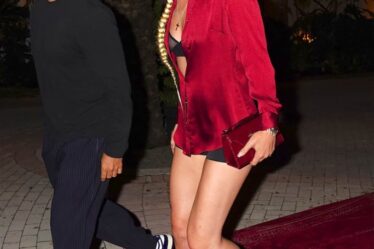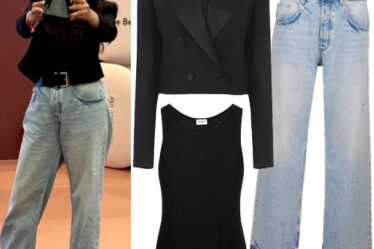
The Basics is BoF’s recurring series on how to set up a fashion business from scratch, developed in partnership with Ari Bloom, a NY-based entrepreneur and strategic advisor. Today, we examine a critical element that can ultimately separate a successful fashion business from the rest: marketing.
NEW YORK, United States — Fashion is a hyper-competitive industry. Talent is readily available, so having a well-designed and a high-quality product is simply the price of entry. What ultimately separates a successful fashion business from the rest is often how the brand’s story resonates with consumers.
In the pre-digital age, brands were built with classic marketing strategies, using traditional media like print and TV to ‘push’ their latest campaigns at consumers. While these traditional tactics may never completely disappear, today’s Internet-era consumers have more power than ever before and interact with the brands they deem worthy of their time via a number of new channels. With the proliferation of digital and social media, the rise of ‘on-demand’ content and services, and the growth of micro-targeting techniques, people increasingly expect products and services to speak directly to their individual needs.
The most successful fashion brands will embrace a blend of both traditional and new media to communicate a consistent and authentic message across multiple channels in a manner that both piques customer interest and creates long-term brand value.
Defining Your Brand Story
Before marketing your brand, it is crucial to define what it is — and what it isn’t. In the most simple form, brands should think about key descriptions of any design or aesthetic features, define their pricing or market segments, and identify exactly who their customer is, factoring in elements like gender, age, geography, interests and anything else that helps describe their lifestyle and preferences. By the end of this exercise you should be able to clearly articulate a simple brand equity statement in one or two sentences, for example:
“Brand X is a contemporary American work wear collection featuring traditional fits and luxury fabrics for professional women ages 40-50. Brand X is unique because it offers exceptional quality at accessible prices.”
The Classic Marketing Framework
In the classroom, the 4P’s (Product, Place, Price, Promotion) has become a straightforward, foundational framework through which to think about marketing. There are many other frameworks available, but the 4Ps is a good place to start. It’s important not to be too rigid within any one framework, however.
Product
In fashion, having a great product is the essential foundation of a great business. In the classical marketing framework, “product” is defined as an item or service that meets a consumer’s need or desire. But it’s worth noting that, in fashion, we are often designing products that people don’t yet know they want, then using our various marketing strategies to unleash their desire.
As we discussed in Part 5 of the Basics series, there are many business and trend considerations involved in the development of a collection. Likewise, when planning marketing initiatives, it’s important to consider whether they will be aiming to promote the brand or specific products. There is a place for both, but whenever possible, it is advisable to feature actual product, as this can directly help to drive sales and awareness of key items.
For example, is there an iconic piece from your collection that conveys your message best? Are there unique design or functional features to call out or focus on? Is there a particular lifestyle or activity that you want to associate with your product or brand? Is there a specific person or archetype you want to associate with your brand? What colours are important to the brand DNA, year round or seasonally?
Price
In fashion, price is not only a reference to the nominal amount of money being charged for a product. It can also refer to the “value equation” that the brand creates in a consumer’s mind. For a price being paid, what qualitative benefits and functional utility is the consumer getting in terms of design, quality, goodwill?
Keep in mind that the resulting value equation will have a sizeable impact on how your brand is perceived. This should be considered before any price tickets are printed.
Place
As discussed in Part 6 of the Basics, fashion brands have multiple sales channels through which to reach end consumers. In this framework, “place” refers to selling the right product at the right price (value) in the right place.
Where you sell influences which customers you reach and how your product is perceived. Therefore, picking the right accounts can have a major impact, not only on your financial results, but also on your brand image. Some brands may even justify selling or consigning to an account that is known to pay late (or not at all), simply for the marketing value. While we don’t recommend working with retailers on this basis, you should always consider the brand equity you can create or destroy by working with certain retail partners.
If you own direct-to-consumer sales channels (a physical store or a commerce-enabled website, for example), you have the benefit of controlling the environment and experience. This gives you an opportunity to tell the story exactly as you want it, which may well be the most powerful marketing vehicle of all.
Regardless of whether you sell online, it’s important for every brand to have a website. This may only require a small investment of time and money, but will be a crucial way to capture the traffic that you generate when you create interest in your brand. Think of your website as the first window into your brand and your world.
Promotion
There are many promotional techniques available to brands, ranging from the traditional to the cutting-edge. All are effective in their own way.
1. Advertising
Perhaps the most traditional promotion technique is advertising: in print, TV, radio and, now, online. This is also known as paid media. This is often one of the more expensive methods of communication, especially in print, but can reach a large audience and can bring prestige to your brand. Many new magazines will run ads for young designers and very low costs, or sometimes for free, as long as the creative elements are strong and in line with the quality of the rest of the magazine. Online advertising can be more affordable, though there is much debate about the effectiveness of traditional banner ads. But deployed intelligently, with specific goals, online advertising can help drive sales, especially to your own e-commerce site, and can be targeted and measured much more effectively than print ads.
2. CO-OP
Many retail accounts will offer (or require) brands to promote your designs in store or in distributed marketing collateral, such as catalogues and store advertisements. This usually comes with a fee attached and can be executed by the brand or the store. Signage can be very effective in drawing a customer’s attention to your product in store, especially when it is competing against other brands.
3. Public Relations
A strong PR strategy can lead to extremely helpful “organic” media exposure and influencer endorsements via celebrity placement, gifting, wardrobing and personal appearances by the designer or brand representative(s). One of the big questions most young brands wrestle with is whether to hire a PR firm or to keep PR in house. If you do decide to hire an outside firm, it is important that you spend time first setting a strategy with clear benchmarks for success and meet regularly to review progress.
4. Social Media
With so many new online platforms and technologies available to brands, it can be hard to know where to focus. In general, it starts with understanding your customer. If you are selling designer dresses, platforms like Facebook may or may not be the best place to promote your brand. As it stands today, it is usually in a fashion brand’s favour to focus on highly visual social media platforms, such as Instagram and Pinterest, where they can demonstrate the beauty and design of their products. Instagram, which has really caught on in the fashion industry, is an excellent platform for small brands, as it is highly visual and enables you to demonstrate the essence of your brand, even thought it’s a hard place to drive sales as Instagram does not currently allow live links in image captions.
No matter which social media platform(s) you decide to use, choose carefully and make sure you have the resources to keep your accounts active and engage your followers. Somebody on your team must be dedicated to posting regularly, monitoring reactions and responding in a timely fashion. And remember, these platforms are conversational — not bullhorns — so make sure to also use your social media presence as a way to listen to your followers and gather important feedback.
Ari Bloom is the founder of A2B Ventures. He has worked with numerous fashion brands as a consultant and a mentor working with the CFDA’s fashion incubator program. He collaborated with Imran Amed to continue The Business of Fashion Basics series.
Previous articles in The Basics series:



